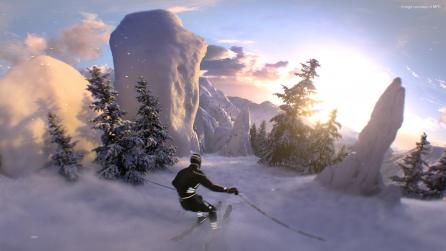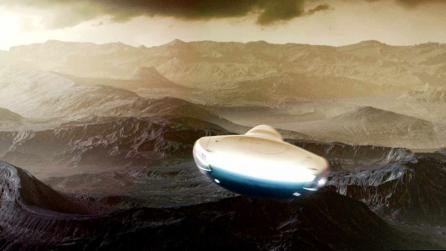The rise of content creation in VR
VR and AR are slowly infiltrating our industries. We’re going to see this technology influencing everything from designing the latest must-have sneakers, to visualizing buildings before a brick has been laid, to producing more and more immersive alternative reality experiences.
That means we’re going to see a lot more people working in 3D, as more and more 3D assets and objects are required for these environments.
The challenge is that traditionally, the technical capabilities required to move to a 3D workflow are developed over a long period. There’s a learning curve required to master specialized software, you need to think in polygons, edges, and vertices, and you have to have a lot of experience practicing before you can produce work to a high standard.
Many of the people involved in designing shoes, houses, or art works are still more comfortable working with physical substances, such a clay or paper, and less familiar with using technical computer software.
This is where VR can help bridge the gap. Using a VR headset and controllers makes the design process feel more hands on, more instinctive. Rather than using a mouse pointer and selecting commands from a menu, you can stretch, or pull, or cut, whatever’s in front of you intuitively, much as you would in real life.
It’s this easier, more natural process that means content creation in VR will be the way we create in the future.
It has the potential to make 3D far more accessible to people that found its technical barriers too challenging in the past.

A new generation of content creation tools
The rise of a new type of content creation tool, one that deliberately seeks to digitally emulate how artists and designers create in the physical world, has been underway for some time.
Google’s Tilt Brush app for the HTC Vive allows both professional and amateur artist to paint in 3D space inside a VR world, using a variety of different brushes.
Gravity Sketch is 3D content creation software geared towards efficient, intuitive creation of symmetric geometry, great for creating quick, 3D printable sketches.
And tools designed specifically for animators, like ANIMVR™ allow users to draw in VR, providing a set of tools based on concepts used in traditional animation.
Today, this technology might still seem a little awkward - you still have to use headsets and controllers for example. But we’re just at the beginning. New technology like haptic gloves, which the user could wear and actually feel the modelling clay in their hands as they shape it, will make the experience feel more immersive, more real than ever before.
So what needs to change for this tech to become the go-to for content creation?

ADF technology and the future
Most of the current generation of VR content creation tools are great sandboxes. They’re perfect for experimenting and exploring ideas. But if you want to do more than that, you quickly run into limitations.
Take fine detail work in VR modeling. With today’s VR modeling tools, there’s a limit beyond which it’s impossible to zoom in and complete the intricate detail you’d expect to find in the professional 3D models used in today’s game and film industries. Current VR modelling tools are simply not able to handle the huge number of polygons required for this level of detail.
Similarly, if you want to zoom out and sculpt at scale, you get a mesh that has lots of lots of details, which makes it really heavy and cumbersome.
The development of Adaptive Distance Fields (ADF) technology has the potential to revolutionize this.
ADFs are a way of representing a shape in 2D or 3D that can significantly improve and speed up the ability to manipulate that shape.
ADF technology gives you much more efficiency and power - you can zoom in and to levels of data or scale not previously possible, because the operations carried out on ADFs are computationally much more efficient. You’re sculpting using the algebra built over the ADF, rather than pushing millions of polygons around.
The power to zoom in and create intricate details, or zoom out and work at huge scales, means artists can go way beyond knocking together basic designs for experimentation or fun. They could feasibly complete very intricate or very large-scale work to a professional standard, fast.
Foundry are working on a cutting-edge tool, harnessing the power of Adaptive Distance Fields, to solve the barriers we’ve spoken about here.
Want to know more? Sign to our Foundry Trends newsletter below, and get the latest news as we reveal it.


